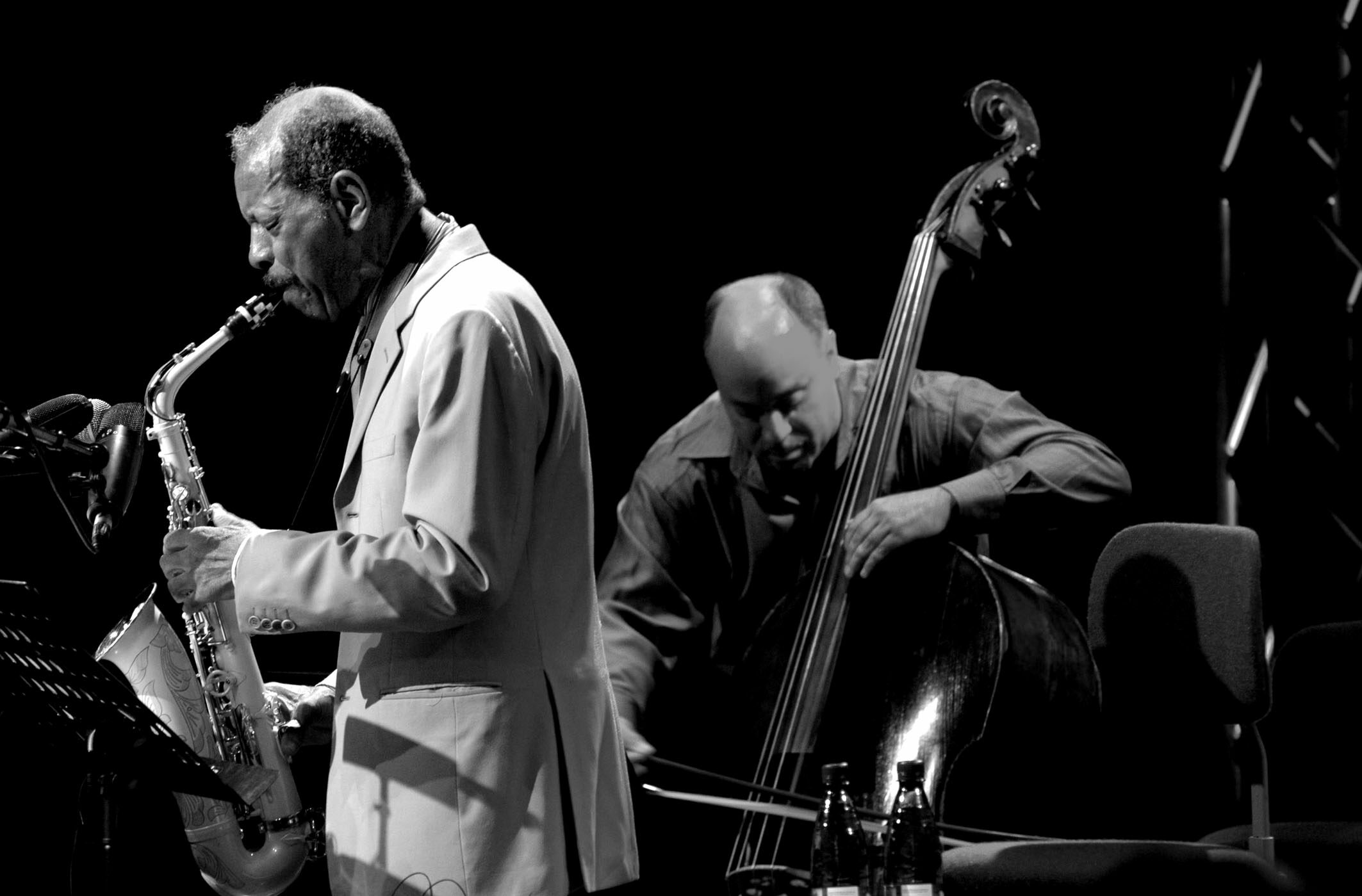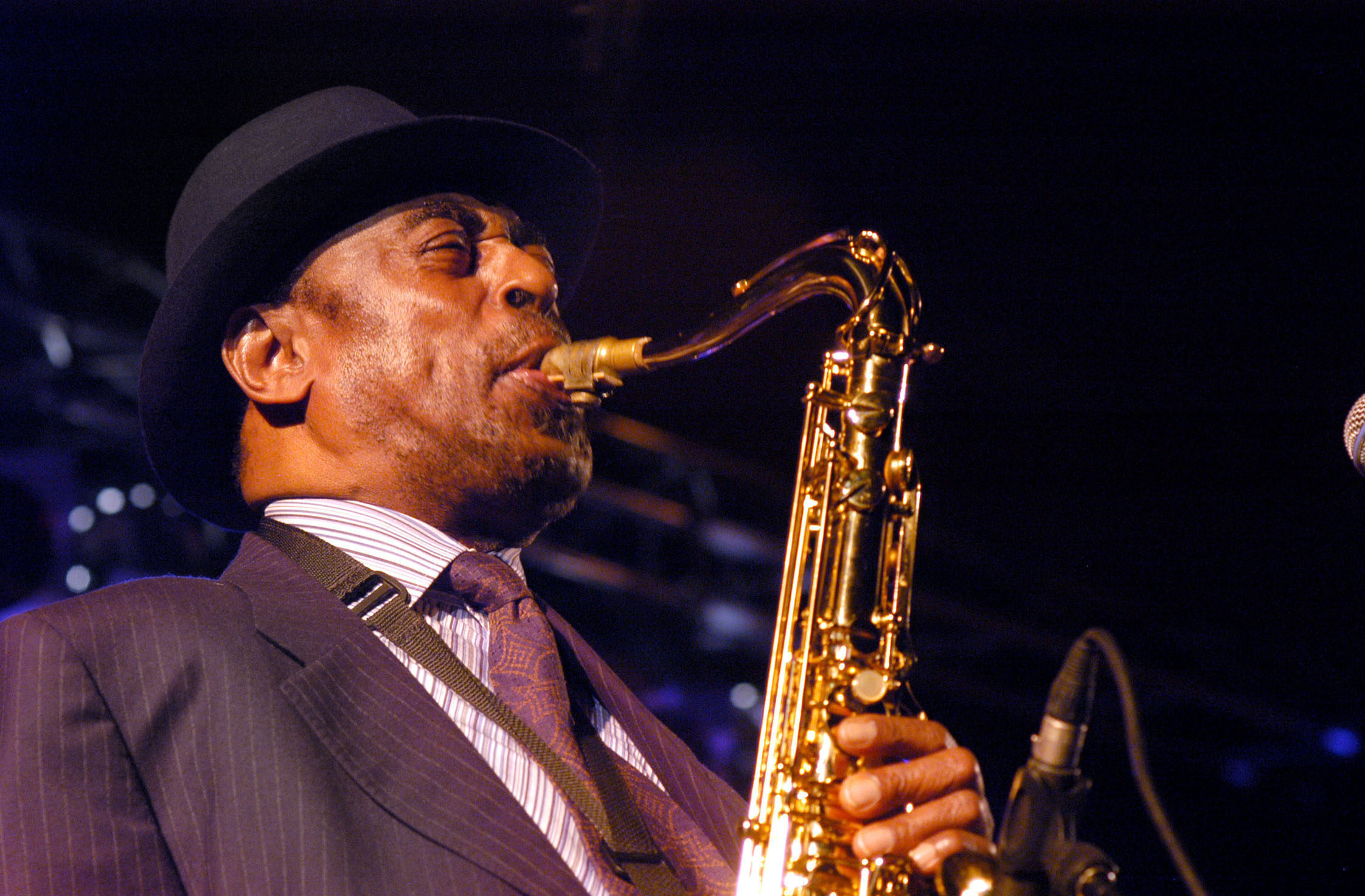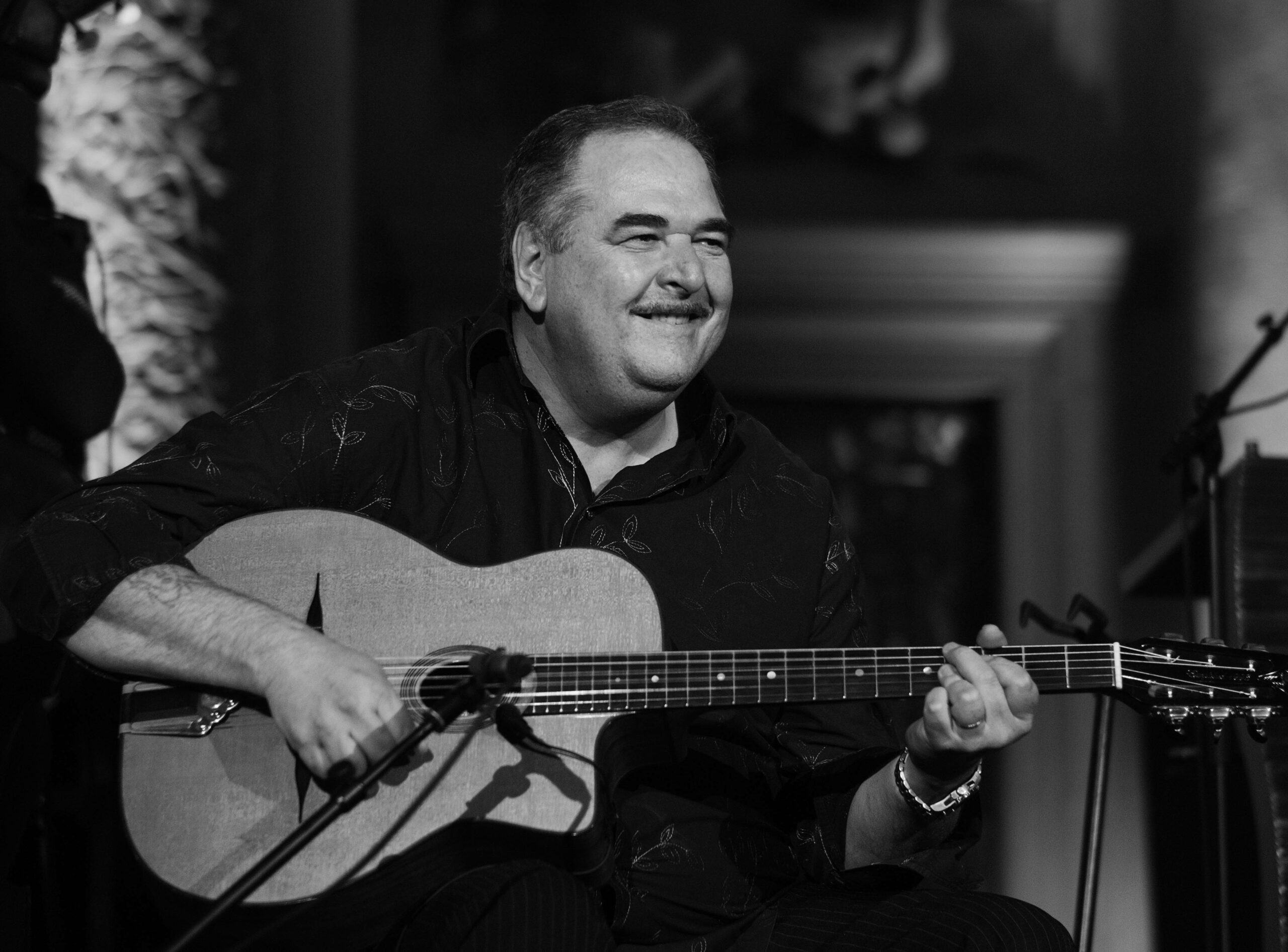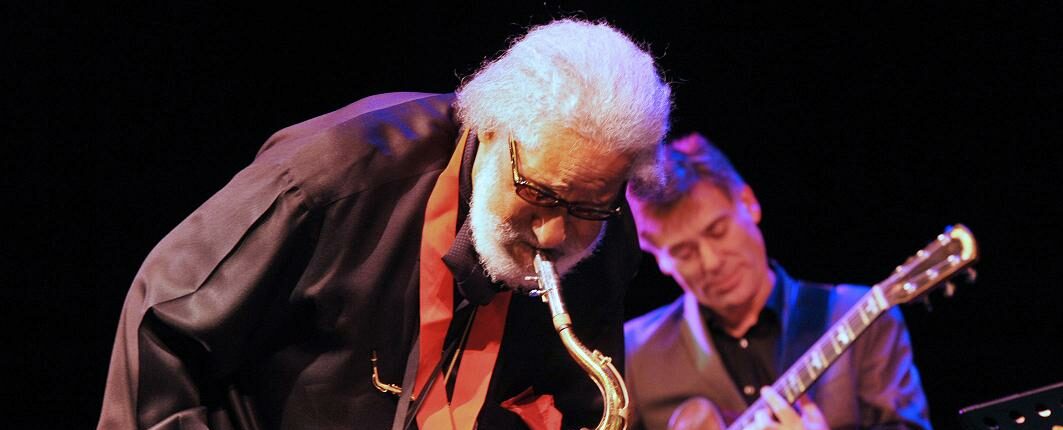There is something eerily correct about the fact that Lee Konitz, of all people, is the last surviving musician to take part in the "Birth of The Cool" sessions of the Miles Davis/Gil Evans Nonet in 1949 and 1950, which are now regarded as groundbreaking. He was considered the most controversial member of the ensemble because of his skin color. Joe Zawinul gave a very impressive account of this "turned racism", which one would like to understand exclusively as a defensive stance, in a joint conversation many years ago, and, like Konitz, in a humanly very remarkable mixture of understanding and helplessness. Both generously overlooked personal injuries. Konitz, now 88 years old, became a figurehead of the new cool jazz not only through the Nonet recordings. His legendary album "Subconscious-Lee" is the first highlight of the genre alongside the EPs released by the "Birth of The Cool" sessions.
Note: This interview originally took place in 2016 and is published here on the occasion of the 25th anniversary of Enjoy Jazz. The statements and references made in the interview refer to this date.
"I remember the 'Birth Of The Cool' sessions very well," says Konitz. "It was a very exciting time and even the beginning of the recordings didn't seem particularly enlightening. I felt out of place at the beginning. Because Sonny Stitt and some others had probably complained to Miles that he had brought me into the band. But I had the full backing of Miles, Gil and Gerry, which of course helped me. However, the recordings left me with the certain feeling that this was not the best this band was capable of. I still have no satisfactory explanation as to why that was the case. But I enjoyed being part of this exciting process at all times. The music was a new challenge, which I don't think we mastered to our complete satisfaction at the time. Above all, I don't think the phrasing in the band was right, the musicians came from different musical worlds back then, and I think you can hear that."
The two EPs that initially emerged from these sessions attracted some attention. However, Lee Konitz was not exactly showered with respect and acceptance at the time, especially from his colleagues. Still visibly uncomfortable, he tells the story of how Sonny Stitt and Stan Getz ridiculed his music with a slapstick-like dance in front of the stage for all to see during one of his performances at the time. He himself, blinded by the spotlights, didn't even see it, but sensed the merriment in the audience and later had the story told to him by a friend who was present. by a friend who was present. The reasons for the disrespectful behavior of his colleagues can only be guessed at: Stan Getz's character was known to have often become unbalanced, partly as a result of his almost permanent drug abuse. The unflattering episode from that time, which earned him one of several prison terms, is legendary. Armed with a toy pistol, he tried to force the handing over of narcotics in a pharmacy. The situation with Sonny Stitt was probably different. He was initially considered the favorite for the alto saxophone section of the Miles Davis/Gil Evans Nonet due to his very contemporary technical skills. However, because they did not want to further strengthen the bebop faction within the ensemble and and were looking for a new, more introverted sound, the decision was made in favor of Lee Konitz. The Black Community was very upset about this. Their point of view was clear: why hire a white person in the field of black music when there were plenty of black people available for the job? One of them was Sonny Stitt, who would undoubtedly have benefited from the job at the time. For one thing, he was also struggling with drug problems. (A phrase which, given the circumstances. The fact that he had just been convicted of drug dealing is actually tantamount to a euphemism). On the other hand, he had to free himself from the eternal comparisons with Charlie Parker, not least because the latter had already unflatteringly accused him of sounding far too much like him several years earlier. This was also tragic because Stitt himself always and quite understandably emphasized that he had developed his sound independently of or even before Parker, whereby he saw himself strongly influenced by Lester Young, who was in any case something like the common denominator of the new departure on the saxophone. By switching to the tenor saxophone as his main instrument, Sonny Stitt finally put an end to this tiresome discussion himself.
"Birth of The Cool" brings together and incorporates so many influences that the question arises as to who was actually in charge or who led the band and the project that is now listed among Miles Davis' albums as the leader? The last person who can answer this from his own experience is Lee Konitz: "Gerry and Gil certainly had the greatest influence, if only through their arrangements and their idea of how this music should sound. And Miles was kind of their chosen city, you could say. He worked his way brilliantly into this sound concept. He was the embodiment of those ideas." Although Konitz flirts with the fact that his memories are gradually fading and that he still has the period mainly in the form of images, the impression of the human encounters of the time is is unclouded: "Of course it was noticeable that we were dealing with something new here. The arrangements were great, the people involved were all very special. Gerry was a very peculiar character, but I still have the greatest respect for his work to this day. I personally like Gil very much. He was incredibly amiable, reserved and yet very present in his quiet way."
Lee Konitz tells all of this with a certain distance, which is not just the result of a certain wisdom of age. Basically, the style-defining alto saxophonist has been a loner all his life. Yet Lee Konitz is a very smart conversationalist with a very fine sense of humor. When I turned on the tape to ask the first question in our most recent conversation on the fringes of the Enjoy Jazz Festival, he beat me to it, grinning and chattering away: "I was born in the distant past and ..." Then he burst into an infectious laugh. However, he never had any long-term musical collaborations, for example in the sense of his own working band. His childhood was formative here. Although his two much older brothers took him everywhere with them to supervise him, he mostly felt excluded. He sat in the baby carriage while his brothers played baseball. This led to a certain speechlessness, an inward-looking communication that was later reflected in his saxophone playing. later reflected in his playing on the saxophone. The fact that in Konitz's catalog it is above all the numerous duo recordings that are considered particularly intense and successful is just as much an expression of this history as the fact that he still travels alone as a matter of course. His wife stays at home in New York. And there is another impressive indication. Konitz has an incredible gift for observation. He never misses a detail in his surroundings. He takes it in and immediately begins to improvise on it in his mind. During a lunch together lasting around an hour, for example, he kept wandering off - not disrespectfully, but in a kind of meditative restlessness. A paradox that seems to suit him very well. Sometimes there was a small child at the next table, with whom he made contact to ask how old it was and what it was thinking, while it gave him joyful looks and gestures. Sometimes he observed an obese woman and questioned the social contexts of pathological obesity.
Konitz's musical socialization took place via the big bands of Teddy Powell and Claude Thornhill, who made quite popular music at the time, i.e. were still largely committed to the swing era, and had only hesitantly opened up to bebop. However, Thornhill's arrangements in particular already pointed to the new, cool era. Gerry Mulligan and Gil Evans, among others, were responsible for this. When Konitz joined the Nonet, he was just 21 and was difficult to categorize stylistically, with his enormous urge for a very original sound and his aesthetically contrary playing style. Of course, he had learned from Charlie Parker and, above all, Lester Young. However, he contrasted the outburst, powerful and virtuosic outward thrust of bebop with a peculiarly inward-looking sound in which he subordinated virtuosity to aesthetics. Above all due to his motifs, Konitz found a way of playing that made him the only fully valid alternative to Parker at the time. At the end of the heyday of bebop, he had thus made a name for himself as a pioneer of the new. At first, this newness could easily be categorized as cool jazz. The cool, i.e. introverted, academic, more form-oriented style suited Konitz. However, the motivic work, which often had the character of art music and was strongly influenced by 19th century European classical music, also restricted him. So he continued to develop his playing regardless of genre boundaries.
Thus Lee Konitz has the seemingly paradoxical merit of having become the epitome of a jazz style. He became the epitome of a jazz style when he had long been on the way to overcoming it. This is perhaps the greatest form of freedom that can be achieved in music. Since then, over more than six decades, he has lived it out with a naturalness that cannot be shaken: he has contributed to around 200 albums, has recorded some of the He has never closed his mind to the avant-garde and has also proved to be a generous and reserved supporter of young talent - including in Germany, where he still lives from time to time and where he has been working loosely with Cologne pianist Florian Weber, among others, for a number of years.
Lee Konitz has received numerous awards for his work, including the Jazzpar Prize and the NEA Jazz Master Fellowship, the most important American jazz prize. He was also inducted into the Down Beat Hall of Fame. Nevertheless, it is hard to avoid the impression that he ultimately does not enjoy the full recognition he deserves in jazz history. Objectively, perhaps, but emotionally no. For example, the kind of "soulful cult of old age" never developed around Konitz, as we experience or have experienced with colleagues such as Ornette Coleman, Sonny Rollins, Yusef Lateef or Archie Shepp, to whose late concerts people made or still make pilgrimages in the awareness of their finiteness and thus potentially irretrievable jazz-historical significance.
Perhaps this is because with Konitz one always had the feeling of a certain, albeit extremely polite, distance - not to the music, but to the music business and its mechanisms, which he repeatedly evaded, sometimes for years, by intensifying his teaching activities. teaching activities. He does not offer himself anywhere, but prefers to wait for offers. It is ultimately an inexplicable biochemical phenomenon that leads to one musician being able to transform our recognition into open enthusiasm and another not. This does not make the latter a worse musician, nor a worse person. You just have to approach him differently to feel the same intensity. At the end of our conversation, Lee Konitz utters that wise sentence at the end of our conversation, which is suitable as a universal explanation and makes it clear that he has found his peace: "Music must represent your own life." In this sense, Lee Konitz has long been his own home - in life as well as in music. His credibility is beyond any doubt. Many great jazz musicians have not been able to achieve this state of congruence between the world and me.

Date: December 14, 2023





